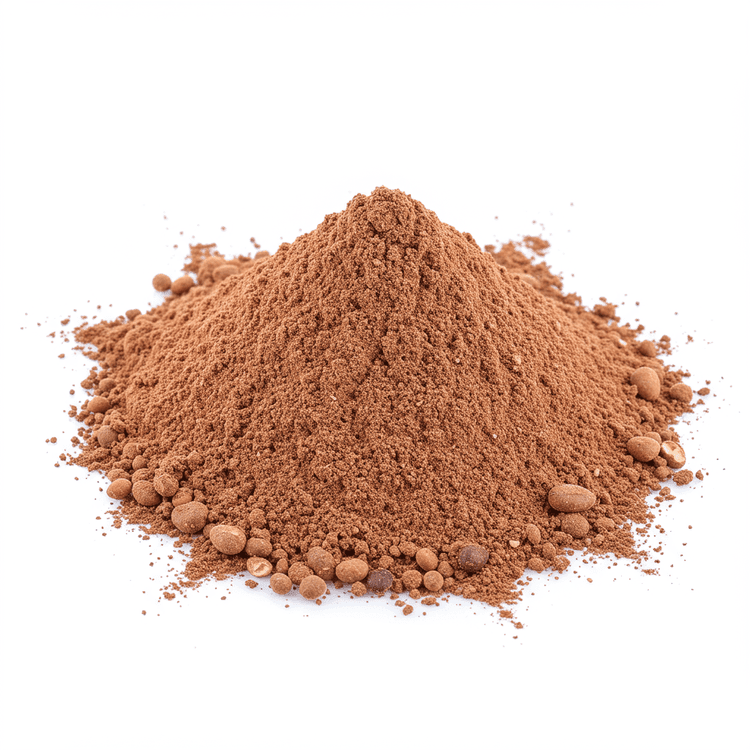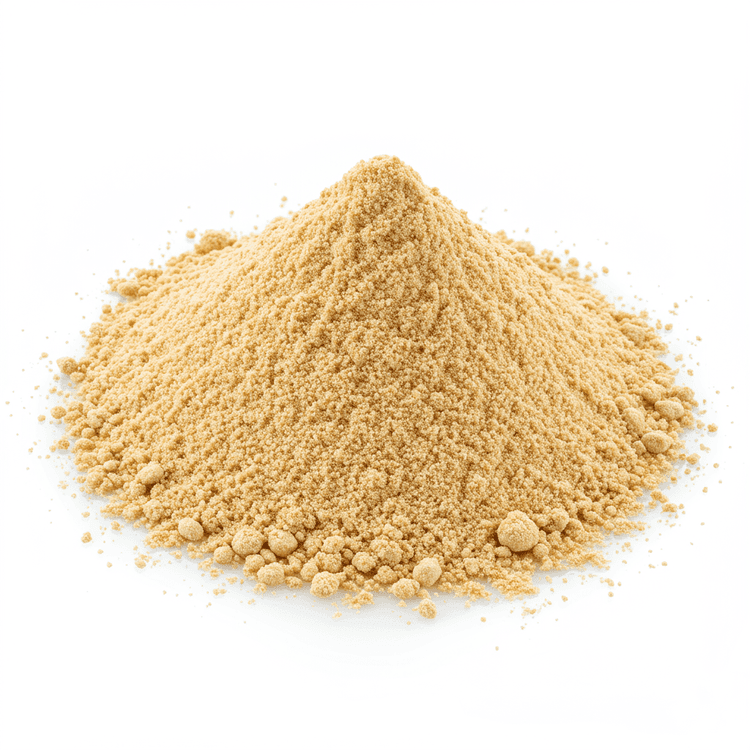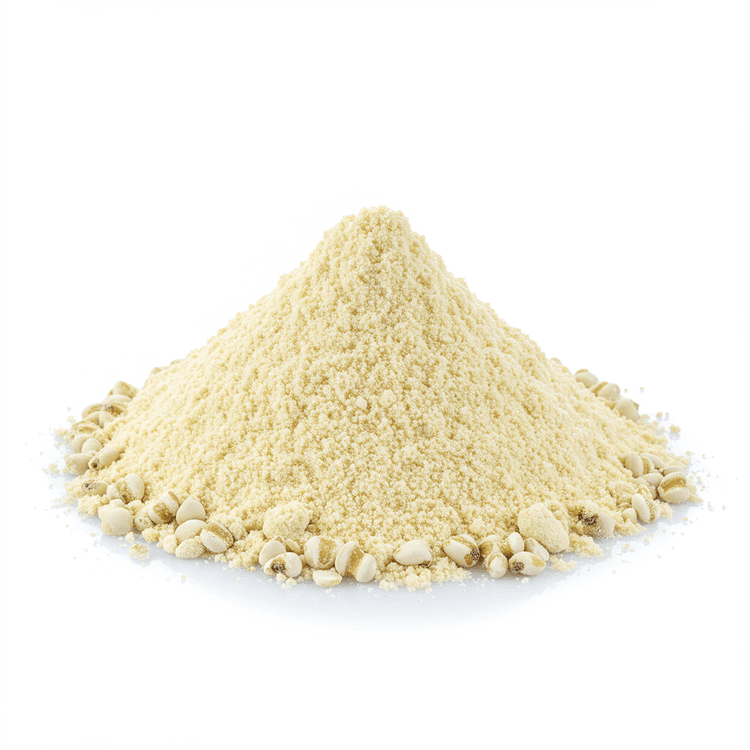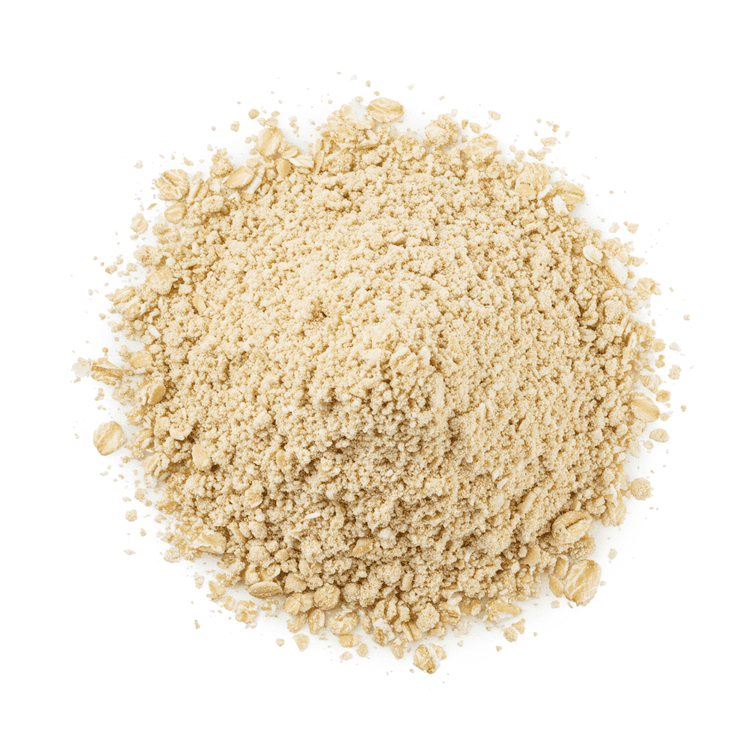
Ragi Flour
Ragi flour, also known as finger millet flour, is a nutritious whole grain flour with a slightly earthy and nutty flavor. This gluten-free flour boasts a reddish-brown hue and a fine, powdery texture. Ragi flour is a staple in many cuisines and is prized for its health benefits and versatility in both sweet and savory dishes. It's gaining popularity as a healthy alternative to wheat flour for those seeking gluten-free options and a boost of essential nutrients.
Common Uses
- Use ragi flour to bake gluten-free breads and rotis: Ragi flour can be used alone or in combination with other gluten-free flours to create nutritious and flavorful breads, flatbreads like rotis, and even dosas, a type of South Indian crepe. Experiment with different ratios to achieve the desired texture and taste.
- Make ragi porridge for a healthy and comforting breakfast: Ragi porridge is a classic dish made by cooking ragi flour in water or milk until it thickens into a creamy consistency. Sweeten it with honey, jaggery, or fruits for a satisfying and nourishing breakfast.
- Prepare ragi-based desserts like halwa or ladoo: Ragi flour can be roasted and combined with ghee, sugar, and nuts to create delicious and traditional Indian sweets like halwa and ladoo. These desserts are naturally gluten-free and offer a wholesome indulgence.
- Thicken soups and stews with ragi flour: A small amount of ragi flour can be used as a natural thickening agent for soups, stews, and sauces. Its nutty flavor adds a subtle depth to the dish. Mix it with cold water to form a slurry before adding it to prevent lumps.
- Create ragi-based pancakes and waffles for a gluten-free brunch: Substitute a portion of regular flour with ragi flour when making pancakes or waffles for a gluten-free and nutrient-rich alternative. The ragi flour adds a slightly earthy flavor and a boost of fiber and iron.
- Bake ragi muffins and cakes: Use ragi flour to replace some all-purpose flour in muffin and cake recipes to add a subtle nutty flavor and increase the nutritional content. You may need to adjust the liquid content to achieve the desired consistency.
Nutrition (per serving)
Nutrition (per serving)
Calories
345.0kcal (17.25%)
Protein
9.7g (19.32%)
Carbs
72.6g (26.4%)
Sugars
1.2g (2.38%)
Healthy Fat
1.0g
Unhealthy Fat
0.3g
% Daily Value based on a 2000 calorie diet
Nutrition (per serving)
Calories
345.0kcal (17.25%)
Protein
9.7g (19.32%)
Carbs
72.6g (26.4%)
Sugars
1.2g (2.38%)
Healthy Fat
1.0g
Unhealthy Fat
0.3g
% Daily Value based on a 2000 calorie diet
Health Benefits
- Rich in calcium for strong bones and teeth.
- High in fiber, promoting digestive health and aiding in weight management.
- Excellent source of iron, preventing anemia and boosting energy levels.
- Contains essential amino acids, vital for muscle repair and overall growth.
- Gluten-free and suitable for individuals with celiac disease or gluten sensitivity.
- May help manage blood sugar levels due to its low glycemic index.
Substitutes
Chefadora AI is here.
Experience smarter, stress-free cooking.
Storage Tips
Ragi flour is best stored in an airtight container in a cool, dry, and dark place. This helps to prevent it from absorbing moisture and developing a musty odor. Properly stored, ragi flour can last for up to 6-8 months. For extended shelf life, especially in humid climates, consider refrigerating or freezing the flour. If refrigerating, ensure the container is tightly sealed to prevent condensation. When freezing, portion the flour into smaller bags for easy use later.
Marnirni-apinthi Building, Lot Fourteen,
North Terrace, Adelaide, South Australia, 5000
Australia



